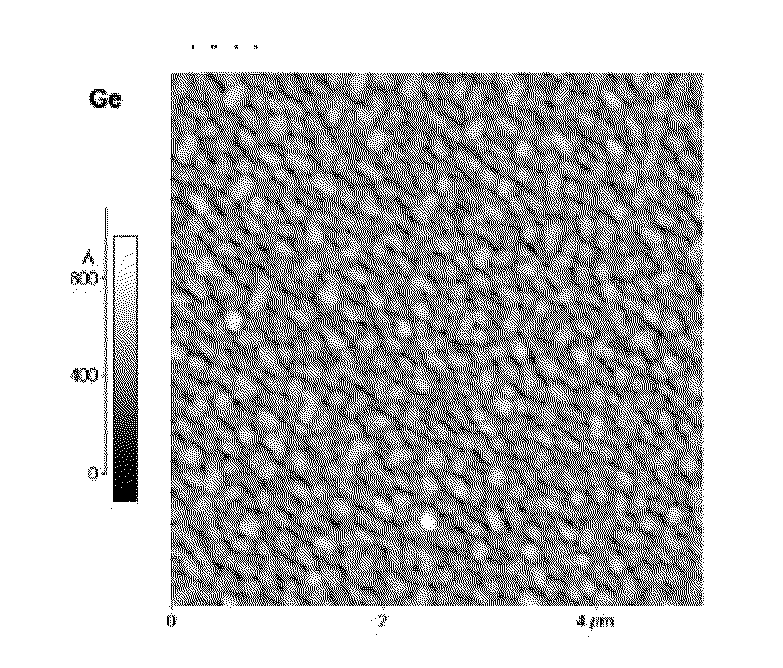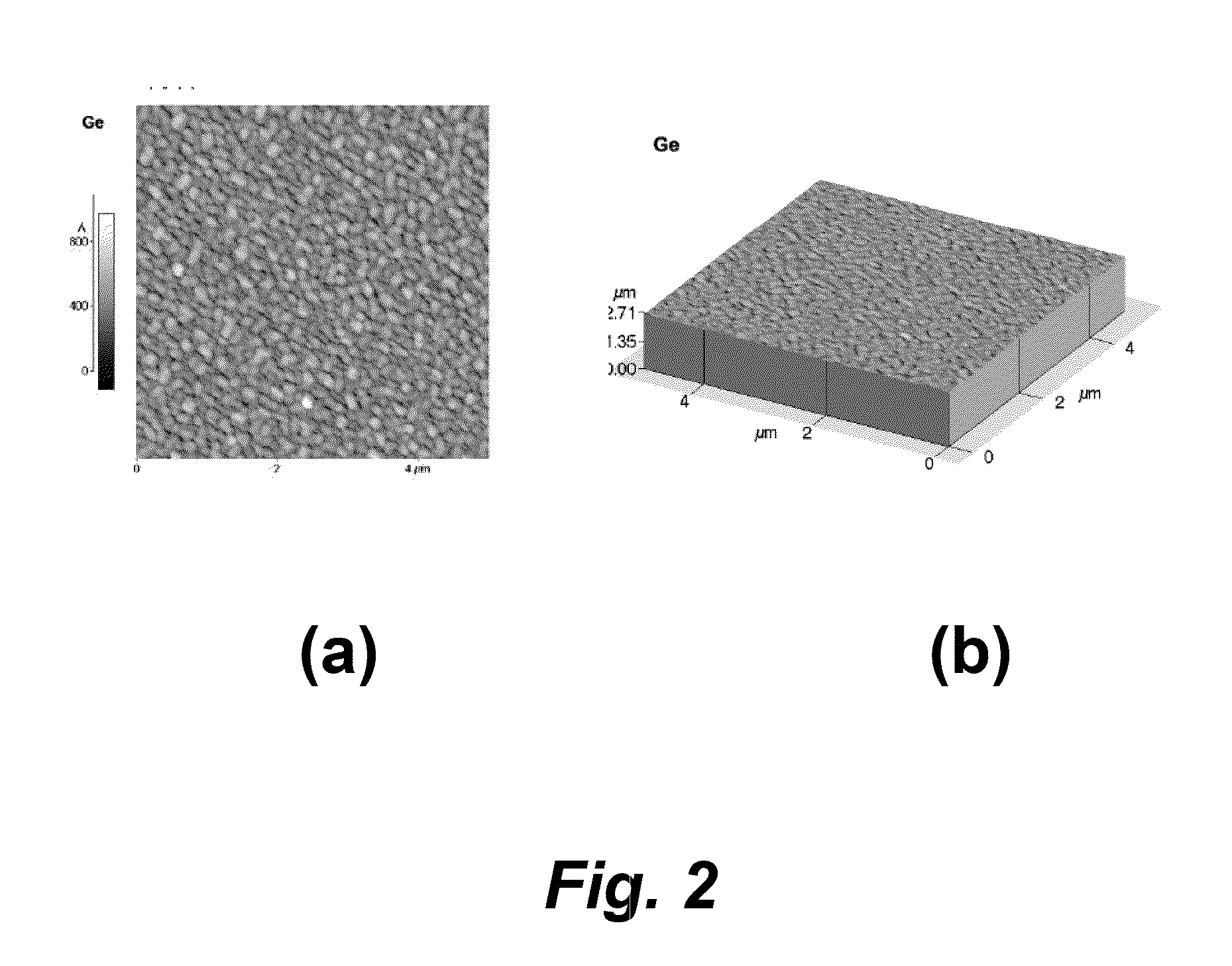Germanium films by polymer-assisted deposition
a germanium film and polymer technology, applied in the direction of non-metal conductors, liquid/solution decomposition chemical coatings, conductors, etc., can solve the problems of relatively high cost and complex methods
- Summary
- Abstract
- Description
- Claims
- Application Information
AI Technical Summary
Benefits of technology
Problems solved by technology
Method used
Image
Examples
example a
[0029]Preparation of a coating solution using germanium oxide: 2.56 grams of H2EDTA (Aldrich, 99.995%) were dissolved in 25 mL of water. 3.25 g polyethyleneimine (“PEI”) (BASF) were then added and mixed to yield a clear solution. 1.20 g of GeO2 (ACROS, 99.999%) were then added. After standing overnight, the result was a clear liquid with some precipitates. The precipitates were removed by filtration using a 0.45 micron filter. The clear solution that remained was placed in an Amicon filtration unit containing a 10,000 molecular weight filter designed to pass materials having a molecular weight<10,000 g / mol. The solution was diluted to 200 mL and then subjected to ultrafiltration, which resulted in reducing the volume to 20 mL for the now concentrated, coating solution. Inductively coupled plasma-atomic emission spectroscopy showed that the coating solution 404 mM Ge. The pH of the solution was 8.44.
example b
[0030]Preparation of a coating solution using germanium tetrachloride: 1.3 grams of H2EDTA (Aldrich, 99.995%) were dissolved in 25 mL of water. 1.6 g PEI (BASF) were then added and mixed to yield a clear solution. 1.20 g of GeCl4 (ACROS 99.999%) were then added slowly. A small amount of precipitate formed. The pH was adjusted to pH 4.9 by dropwise addition of ammonium hydroxide and the solution was allowed to stand overnight. A very small amount of precipitate formed, which was removed by filtering with a 0.45 micron filter. The resulting clear solution was 200 mM in Ge and may be used as a coating solution because the ammonium and chloride ions remaining in the solution may be removed during annealing of the films. Further purification to remove the ammonium chloride was done by placing the solution in an Amicon filtration unit containing a 10,000 molecular weight filter designed to pass materials having a molecular weight<10,000 g / mol. The solution was diluted to 200 mL and then c...
example 1
[0031]Si (001) substrates were cleaned using by a 3:1 mixture of concentrated sulfuric acid (H2SO4) with hydrogen peroxide (H2O2) for 10 min to remove organic residues from the surface. The silicon was rinsed until the pH of the rinse water was approximately 7. The substrates were dried with dry nitrogen gas and then etched for 30 min in 40% NH4F and rinsed for 10 min in de-ionized water to remove surface oxides. A precursor solution of example A was then spin-coated on the cleaned Si (001) substrates at 2500 rpm for 20 seconds. The resulting films were heated in forming gas at 900° C. for 3 hours to give highly ordered germanium films with thicknesses of 30-40 nm.
PUM
| Property | Measurement | Unit |
|---|---|---|
| θ- | aaaaa | aaaaa |
| resistivity | aaaaa | aaaaa |
| temperature | aaaaa | aaaaa |
Abstract
Description
Claims
Application Information
 Login to View More
Login to View More - R&D
- Intellectual Property
- Life Sciences
- Materials
- Tech Scout
- Unparalleled Data Quality
- Higher Quality Content
- 60% Fewer Hallucinations
Browse by: Latest US Patents, China's latest patents, Technical Efficacy Thesaurus, Application Domain, Technology Topic, Popular Technical Reports.
© 2025 PatSnap. All rights reserved.Legal|Privacy policy|Modern Slavery Act Transparency Statement|Sitemap|About US| Contact US: help@patsnap.com



